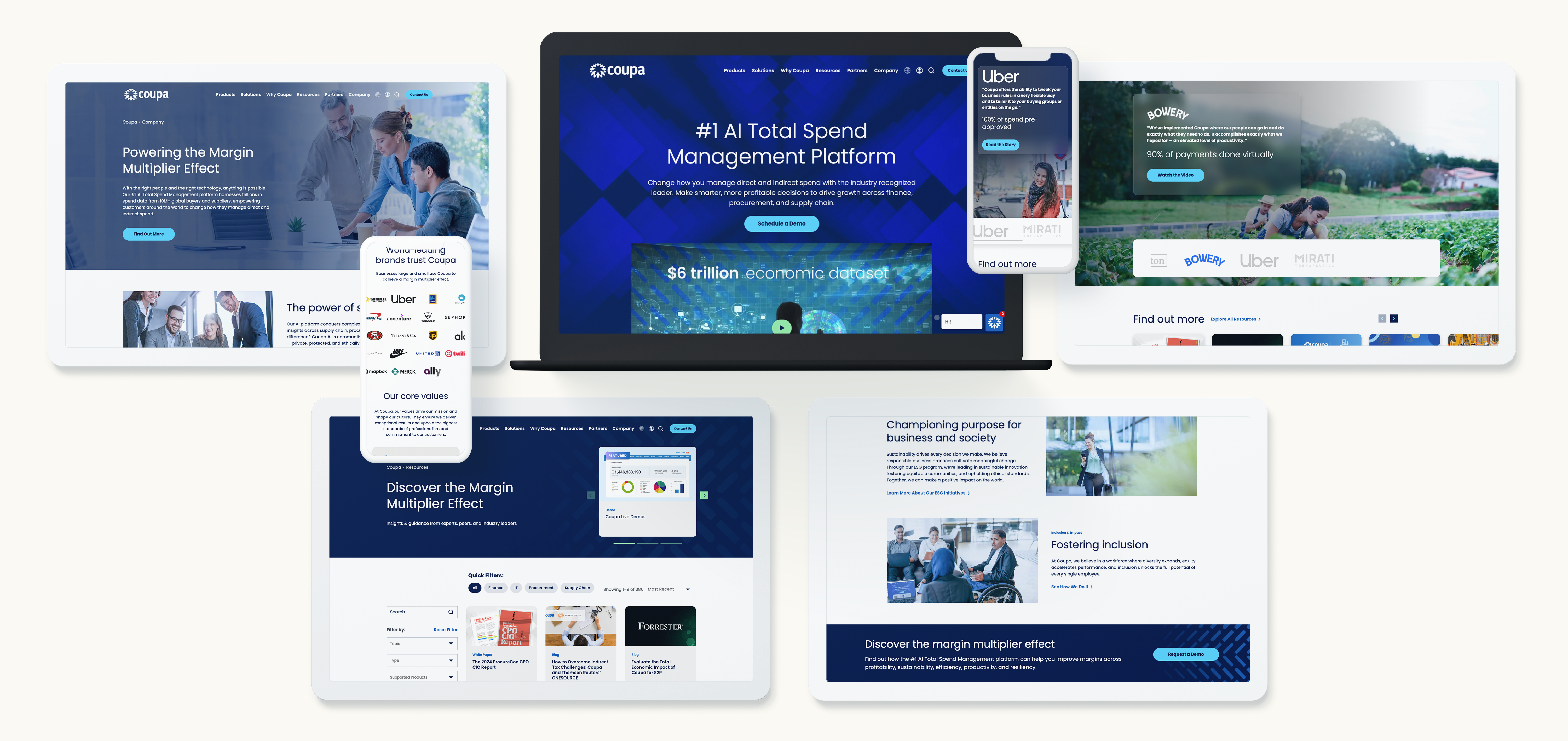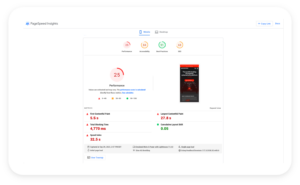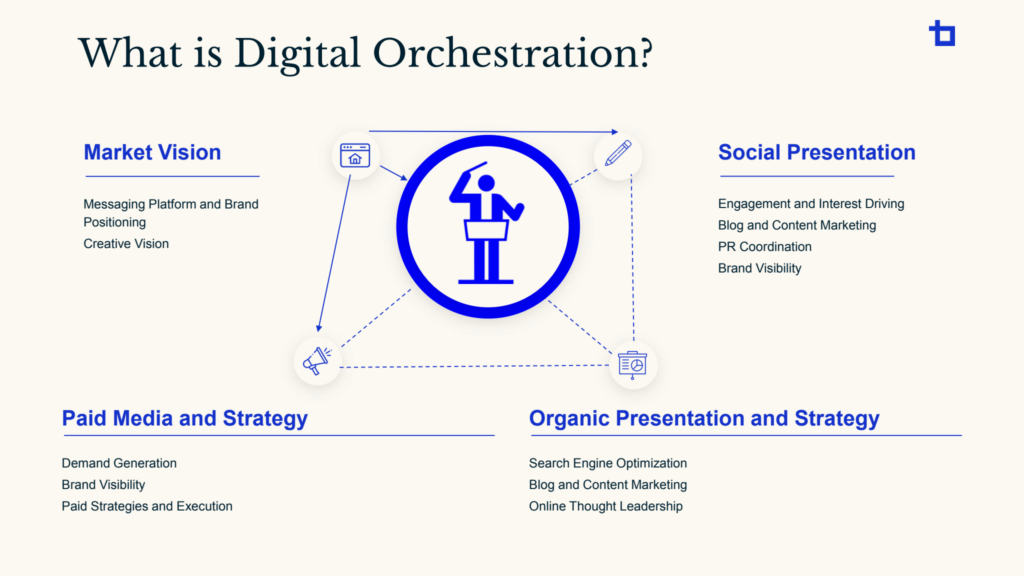Artificial intelligence (AI) is revolutionizing search engine optimization (SEO), making it easier for businesses to improve rankings and visibility. From automated content optimization to predictive analytics, AI-powered tools help marketers refine their SEO strategies efficiently. In this guide, we’ll explore how AI is transforming SEO and which tools can give your brand a competitive edge.
How AI is Transforming SEO
AI enables more precise keyword targeting, smarter content recommendations, and real-time performance analysis. Businesses that embrace AI-driven SEO gain a competitive advantage in the digital landscape.
Key Benefits of AI-Driven SEO Tools:
- Enhanced keyword research: AI identifies emerging trends and high-value keywords.
- Automated content optimization: AI-powered suggestions improve readability and relevance.
- Smarter link-building strategies: AI detects valuable backlink opportunities.

Top AI Tools for SEO Optimization
1. AI-Powered Keyword Research
Tools like Clearscope and Semrush use AI to analyze search trends and recommend high-impact keywords.
2. Automated Content Optimization
Platforms like SurferSEO and MarketMuse help structure content for maximum SEO value.
3. AI-Based Technical SEO Audits
Tools such as Screaming Frog and Lumar identify and fix website issues automatically.
4. Predictive SEO Analytics
AI-driven analytics forecast search engine trends, allowing businesses to adapt proactively.

The Future of AI in SEO
Voice search optimization will become increasingly important as more consumers rely on smart assistants for search queries. AI-generated content will streamline content creation, enabling brands to scale their digital presence efficiently. Additionally, real-time SEO adjustments will allow businesses to respond dynamically to algorithm changes, ensuring sustained search visibility. By leveraging AI-powered tools, companies can stay ahead of the competition and maximize their online impact.
Want to leverage AI-driven tools for better SEO performance? Contact Bluetext today to optimize your strategy for success.
Take this blog post on the go! Listen to our podcast version for a convenient way to stay up-to-date on marketing trends and strategies.
Search engine optimization (SEO) has come a long way from its early days of keyword stuffing and link farming. As search engines have become more sophisticated, so too have the strategies needed to achieve high rankings. The evolution from keyword-centric SEO to a more nuanced approach that prioritizes semantic search and intent matching reflects the growing importance of understanding not just what users are searching for, but why they are searching for it.
At Bluetext, we recognize that staying ahead of these changes is crucial for brands that want to maintain a competitive edge. In this blog, we’ll explore the shift from traditional keyword-based SEO to the more advanced techniques of semantic search optimization. We’ll also provide actionable strategies for creating content that aligns with user intent, earns featured snippets, and ranks well in voice search results.
The Shift to Semantic Search
In the past, SEO was largely about identifying the right keywords and using them in the right places on a webpage. While keywords are still important, search engines like Google have advanced to the point where they can understand the context and meaning behind those keywords. This is known as semantic search.
Semantic search focuses on understanding the intent behind a user’s query and delivering results that are contextually relevant. For example, a user searching for “best running shoes” might be interested in different things depending on whether they’re a casual jogger or a marathon runner. Search engines now aim to understand these nuances and provide results that are more aligned with the user’s intent.
Understanding User Intent
User intent is the underlying goal a user has when they type a query into a search engine. There are generally four types of user intent:
- Informational Intent: The user is looking for information on a particular topic. Example: “How to train for a marathon.”
- Navigational Intent: The user wants to find a specific website or page. Example: “Nike running shoes.”
- Commercial Intent: The user is doing research on a particular product. Example: “Nike running shoe review.”
- Transactional Intent: The user is ready to make a purchase or take a specific action. Example: “Buy best running shoes for marathon.”
Understanding user intent is key to creating content that not only ranks well but also meets the needs of your audience. Instead of simply targeting keywords, focus on the intent behind those keywords and create content that satisfies that intent.
Strategies for Semantic SEO
To optimize for semantic search, consider the following strategies:
- Create Content Clusters: Organize your content around key topics or themes rather than individual keywords. For example, if your main topic is “running shoes,” create clusters of content that cover related subtopics like “types of running shoes,” “how to choose the right running shoes,” and “running shoe reviews.” This approach helps search engines understand the context of your content and boosts your chances of ranking for a wider range of related queries.
- Use Natural Language: Write your content in a way that mimics how people naturally speak and search. This is especially important for voice search optimization, where queries are often longer and more conversational.
- Answer Questions Directly: Featured snippets are often triggered by questions, so focus on providing clear, concise answers to common queries in your content. Use headings, bullet points, and tables to make your answers easy to find and understand.
- Optimize for Voice Search: With the rise of smart speakers and virtual assistants, voice search is becoming increasingly important. To optimize for voice search, focus on long-tail keywords and natural language queries. Also, consider the types of questions people might ask out loud and provide direct answers in your content.
Earning Featured Snippets
Featured snippets are the short answers that appear at the top of Google’s search results, often in response to a question. Earning a featured snippet can significantly boost your visibility and click-through rates. Here’s how to increase your chances:
- Identify Snippet Opportunities: Use tools like Ahrefs or SEMrush to find keywords that trigger featured snippets and are relevant to your content.
- Format Your Content for Snippets: Structure your content in a way that makes it easy for Google to extract a snippet. Use headings, lists, and tables to organize information clearly and concisely.
- Provide Comprehensive Answers: Featured snippets often pull from content that provides a thorough answer to a query. Make sure your content is detailed and covers all aspects of the topic.
The evolution of SEO from keywords to semantic search and intent matching represents a significant shift in how brands need to approach their digital marketing strategies. By focusing on user intent and creating content that aligns with that intent, brands can not only improve their search rankings but also deliver a better experience for their audience.
At Bluetext, we’re committed to helping brands navigate this ever-changing landscape. Whether you’re looking to optimize for semantic search, earn featured snippets, or rank well in voice search results, we have the expertise to help you succeed. Let’s work together to take your SEO strategy to the next level.
In the dynamic world of government contracting, the key to success lies in understanding and effectively targeting the Ideal Government Persona (IGP). At Bluetext, we recognize that this approach not only optimizes marketing efforts but also maximizes the potential for winning contracts. Here’s how you can refine your strategy to connect with the right government audience.
Understanding the Ideal Government Persona (IGP)
The Ideal Government Persona (IGP) represents a composite profile of your target decision-makers within government agencies. These personas are crafted based on extensive research, including demographic data, job responsibilities, challenges, goals, and preferences. By honing in on the IGP, your marketing efforts can become more precise and impactful.
Steps to Identifying Your IGP
1. Research and Data Collection
Begin with thorough research. Utilize available data sources such as agency reports, market research, and industry analysis. Key information includes:
- Agency size and structure
- Roles and responsibilities of decision-makers
- Budget cycles and procurement processes
- Current pain points and needs
2. Segment Your Audience
Government agencies vary widely, from federal to state and local levels, each with distinct characteristics. Segment your audience based on criteria such as agency type, size, location, and specific operational needs.
3. Create Detailed Personas
Develop detailed profiles for your IGPs. These should include:
- Demographics: Age, education, job title, and career background
- Goals: What they aim to achieve in their roles
- Challenges: Key issues and pain points they face
- Influence: How they influence purchasing decisions and the buying cycle
- Communication Preferences: Preferred channels and content types (e.g., white papers, webinars, social media)
4. Map the Buyer’s Journey
Understand the journey your IGP takes from awareness to decision-making. Map out the stages and identify the touch points where you can engage effectively. This helps in creating targeted content and campaigns that align with their needs at each stage.
Crafting Your Messaging
1. Address Their Pain Points
Tailor your messaging to address the specific challenges and pain points of your IGP. Highlight how your solutions can alleviate these issues and contribute to the agency’s success.
2. Showcase Value and ROI
Government decision-makers are often driven by budget constraints and accountability. Clearly articulate the value and return on investment (ROI) your solutions offer. Use case studies, testimonials, and success stories to build credibility.
3. Use Government-Friendly Language
Speak the language of your audience. Use terminology and references familiar to government officials. This not only establishes rapport but also demonstrates your understanding of their environment.
4. Leverage Thought Leadership
Position your brand as an industry thought leader. Share insights through blogs, white papers, webinars, and speaking engagements. Providing valuable, relevant content builds trust and positions your company as a go-to resource.
Optimizing Your Channels
1. Government-Specific Platforms
Utilize platforms frequented by government officials, such as GovLoop, GSA’s eBuy, and FedBizOpps. Participate in industry conferences and government procurement events to increase visibility.
2. Social Media Engagement
Engage on social media platforms like LinkedIn and Twitter, where many government professionals are active. Share informative content and participate in relevant discussions to expand your reach.
3. Email Campaigns
Develop targeted email campaigns with personalized content tailored to your IGPs. Ensure your emails provide valuable insights and solutions, not just promotional material.
4. Search Engine Optimization (SEO)
Optimize your online content for search engines to ensure your materials are easily discoverable by government officials searching for solutions. Use relevant keywords and phrases that align with their search behavior.
Measuring Success
Track the effectiveness of your IGP-targeted campaigns using metrics such as engagement rates, lead generation, and conversion rates. Regularly review and adjust your strategies based on data insights to continually improve your targeting and outreach efforts.
Conclusion
Targeting the Ideal Government Persona is a strategic approach that can significantly enhance your success in the government contracting arena. By understanding and engaging with your IGP, you can create more meaningful connections, provide relevant solutions, and ultimately win more contracts. At Bluetext, we’re here to help you navigate this complex landscape and achieve your government contracting goals. Contact us today to learn more about our tailored marketing solutions for government contractors.
In the ever-evolving landscape of B2B marketing, staying ahead of the curve is essential for companies aiming to carve out a competitive edge. Among the plethora of marketing strategies available, inbound marketing has emerged as a beacon of innovation, offering a nuanced approach to attracting, engaging, and delighting prospects. As businesses navigate the digital realm, the role of an inbound marketing company becomes increasingly pivotal, guiding enterprises towards sustainable growth and lasting success.
Deciphering the Essence of Inbound Marketing Solutions
At its core, inbound marketing embodies a customer-centric philosophy, focusing on providing value and fostering meaningful connections with target audiences. Unlike traditional outbound techniques that interrupt prospects with unsolicited messages, inbound marketing seeks to attract potential customers organically by delivering relevant, timely, and valuable content. By leveraging strategies such as content marketing, search engine optimization (SEO), social media, and email marketing, B2B companies can establish themselves as thought leaders in their industry while nurturing leads through every stage of the buyer’s journey.
The Multifaceted Role of an Inbound Marketing Company
Embarking on an inbound marketing journey requires more than just enthusiasm; it demands strategic acumen, technical expertise, and relentless dedication to excellence. This is where partnering with a specialized inbound marketing company proves invaluable. These agencies serve as catalysts for growth, orchestrating comprehensive strategies tailored to each client’s unique goals and target audience.
- Holistic Strategy Development: An inbound marketing company begins by immersing itself in the client’s ecosystem, conducting in-depth market research, and analyzing industry trends. Armed with these insights, they craft a holistic strategy encompassing content creation, distribution channels, lead generation tactics, and conversion optimization techniques.
- Content Creation and Distribution: Content lies at the heart of inbound marketing. From blog posts and whitepapers to videos and infographics, the agency produces a diverse array of high-quality content designed to educate, inspire, and engage the target audience. Through compelling storytelling and thought-provoking insights, they position the client as a trusted advisor, fostering brand affinity and loyalty.
- SEO and Website Optimization: In the digital realm, visibility is paramount. Inbound marketing agencies optimize clients’ websites for search engines, conducting thorough keyword research, implementing on-page optimization strategies, and enhancing technical elements to improve site performance and user experience. By ensuring maximum visibility in search engine results pages (SERPs), they drive organic traffic and enhance brand discoverability.
- Lead Generation and Nurturing: Generating leads is one thing; nurturing them into loyal customers is another. Inbound marketing companies employ a myriad of tactics, including targeted email campaigns, social media engagement, and marketing automation, to attract, capture, and nurture leads throughout the sales funnel. By delivering personalized content at each touchpoint, they guide prospects towards conversion, maximizing lead-to-customer conversions and revenue generation.
- Analytics and Performance Monitoring: In the realm of inbound marketing, data reigns supreme. Leveraging advanced analytics tools, inbound marketing agencies track the performance of campaigns, measure key performance indicators (KPIs), and derive actionable insights to refine strategies for optimal results. By adopting a data-driven approach, they continuously iterate and optimize campaigns, ensuring a high return on investment (ROI) and sustainable growth.
Elevating B2B Branding Through Inbound Marketing Excellence
In today’s hyper competitive landscape, branding serves as a cornerstone for B2B success. By aligning their inbound marketing efforts with their brand identity, companies can differentiate themselves from competitors, build credibility, and foster lasting relationships with customers. An inbound marketing company plays a pivotal role in this endeavor, helping clients articulate their brand story, values, and unique selling propositions through compelling content and immersive experiences. By consistently delivering value and addressing pain points, B2B brands can position themselves as trusted advisors, driving brand awareness, loyalty, and advocacy within their target market.
Navigating the Inbound Marketing Landscape for B2B Success
As B2B companies chart their course in the digital era, embracing inbound marketing is not just a choice but a strategic imperative. By partnering with a specialized inbound marketing company, enterprises can unlock the full potential of this transformative methodology, driving sustainable growth, and establishing themselves as leaders in their respective industries. In an age defined by personalized, value-driven marketing, investing in inbound marketing solutions is not merely an option; it’s a prerequisite for B2B success in the modern landscape. As businesses continue to evolve and adapt to changing market dynamics, the role of inbound marketing will only grow in significance, shaping the future of B2B growth and innovation.
Looking to partner with a B2B inbound marketing agency? Contact Bluetext.
In the competitive world of cybersecurity, standing out in search engine results is crucial. However, achieving high rankings requires a unique approach tailored to the industry’s nuances. In this blog post, we’ll explore SEO strategies specifically designed for cybersecurity brands.
1. Secure and Mobile-Friendly Websites
Search engines prioritize secure and mobile-friendly websites. Ensure that your site is HTTPS secured, providing a safe browsing experience. Mobile responsiveness is also a crucial factor, considering the increasing use of smartphones for online activities.
When designing new websites for our clients, we subscribe to a mobile-first mentality, ensuring any new website design works seamlessly on mobile devices. Take our work with Securonix for example. Securonix delivers a next-generation security analytics and operation platform for the modern era of big data and cyber threats. They came to Bluetext to evolve their brand and website with a completely new look. One of the major components of the rebuild of the Securonix website was to ensure every part of the website looked and worked seamlessly on various mobile devices across multiple browsers. Bluetext did extensive regression and cross-browser testing to ensure all pages and functionality were rendered and functioned as intended.

2. Targeted Keyword Optimization
Identify and optimize for relevant keywords specific to cybersecurity. Tailor your content to address common queries and concerns in the cybersecurity landscape. Long-tail keywords that reflect user intent can be particularly effective in attracting the right audience.
A key deliverable in any Bluetext website design and development engagement is the creation of an SEO roadmap, identifying keywords to be implemented across the website including headlines, blog posts, and navigation menus.
3. Quality Content with Expertise
Create high-quality, authoritative content that showcases your expertise in cybersecurity. This can include in-depth articles, whitepapers, and case studies. Valuable content not only attracts organic traffic but also positions your brand as a trusted source of information.
When developing a new website for our clients, we always recommend developing a robust blog program to establish brand credibility and increase SEO on-page ranking. If clients don’t have the resources in-house to create blog content, we’re happy to do so on their behalf as part of our engagement, ensuring the utilization of the correct SEO keywords and topics.
4. Technical SEO Best Practices
Implement technical SEO best practices, such as optimizing meta tags, improving website speed, and enhancing site navigation. Search engines reward websites that provide a smooth and user-friendly experience.
One tool you can utilize is Google’s PageSpeed Insights. You can analyze your existing website and determine ways to improve your technical SEO score, boosting your on-page search results.

5. Backlinks from Trustworthy Sources
Build a strong backlink profile by obtaining links from authoritative and trustworthy sources within the cybersecurity domain. Collaborate with industry influencers, participate in cybersecurity forums, and contribute to reputable publications to earn quality backlinks.
6. Regular Security Audits
Perform regular security audits not only for the safety of your users but also for SEO. Search engines may penalize insecure websites. By maintaining a secure online environment, you not only protect your users but also ensure your site’s visibility in search results.
7. Local SEO for Targeted Reach
If your cybersecurity brand operates in specific regions, leverage local SEO strategies. Optimize your Google My Business profile, include location-specific keywords, and participate in local cybersecurity events to enhance your presence in local search results.
By combining these SEO strategies tailored for cybersecurity, you can not only improve your search engine rankings but also establish your brand as a go-to resource for users seeking reliable and secure solutions in the digital realm. Need support in developing your SEO strategy? Contact Bluetext for help.
In the fast-paced world of modern marketing, orchestrating digital campaigns requires a diverse set of skills and expertise. Just like a symphony conductor brings together different musicians to create a harmonious masterpiece, digital marketing conductors play a pivotal role in coordinating various channels, strategies, and technologies to achieve marketing success. This blog post aims to shed light on the different types of conductors you might encounter in today’s marketing enterprises, each with its unique strengths and approaches to digital orchestration.

From the search maestro who commands the realm of pay-per-click advertising and search engine optimization to the social serenade conductor who creates captivating brand symphonies on social media platforms, there are specialized conductors for every aspect of digital marketing. The content virtuoso excels in crafting compelling and valuable content, while the automation maestra leverages technology to streamline processes and enhance efficiency. The experiential composer, on the other hand, creates immersive brand experiences that leave a lasting impact on the audience.
However, the ultimate conductor possesses a rare combination of superpowers from each specialized conductor. They possess the media mix prowess to seamlessly blend diverse marketing channels, the ability to rebalance resources and optimize campaigns across channels, and the holistic view to orchestrate synchronized touchpoints and deliver consistent messaging. This ideal conductor combines the best practices and strategies from each type, creating a marketing symphony that resonates with the audience, drives results, and takes your brand to new heights. Join us in exploring the world of digital marketing conductors and uncover the key qualities that make the ultimate conductor a force to be reckoned with.

Search Maestro
The Search Maestro is a digital marketing conductor who conducts symphonies of success using the search landscape. With brands like Google and Bing in their repertoire, they skillfully navigate the realm of pay-per-click advertising and search engine optimization (SEO). They meticulously research keywords, optimize landing pages, and fine-tune ad campaigns to ensure their audience finds them effortlessly. Utilizing analytics, they track search performance, measure conversions, and continuously refine their strategies for maximum impact.

Social Serenade
The Social Serenade conductor is a masterful orchestrator of social media platforms, enchanting audiences with brands like Facebook, Instagram, Twitter, Meta, TikTok, and Pinterest. They harmonize engaging content, captivating visuals, and strategic ad campaigns to create a captivating brand symphony across various social channels. Leveraging analytics, they gain insights into audience behavior, preferences, and trends, enabling them to refine their approach and create personalized experiences. Additionally, they embrace the power of micro-influencers to amplify brand messages and foster authentic connections with their target audience.

Content Virtuoso
The Content Virtuoso conductor is a maestro of compelling and valuable content. They compose blog posts, videos, infographics, and more, interweaving brands like Google and Bing to create a harmonious blend of information and creativity. By utilizing analytics tools, they track content performance, measure engagement, and gather valuable insights about their audience’s preferences. Leveraging personalization techniques, they deliver tailored content experiences that resonate deeply with their audience. Furthermore, they understand the power of short-form and 15×9 video strategies to captivate attention in a fast-paced digital landscape.

Automation Maestro
The Automation Maestro conductor is a wizard in orchestrating efficient marketing workflows. They seamlessly integrate automation tools and platforms like HubSpot and Marketo to orchestrate personalized, timely interactions with their audience. By utilizing analytics, they gain deep insights into customer behavior, allowing them to automate lead nurturing, email marketing, and personalized campaigns. They leverage account-based marketing strategies to target high-value accounts and enhance customer experiences throughout their journey. Their expertise lies in utilizing data-driven insights to optimize their automation processes continually.

Experiential Composer
The Experiential Composer conductor is a visionary in creating immersive brand experiences. They compose multisensory journeys that incorporate digital touchpoints with offline interactions, utilizing platforms like Google, Bing, Facebook, Instagram, and Pinterest. They understand the power of personalization and leverage analytics to craft tailored experiences that resonate deeply with their audience. By harnessing the influence of micro-influencers, they amplify their brand’s reach and foster authentic connections. Their strategy includes capturing attention through short-form content, utilizing platforms like YouTube Shorts, and leveraging the emotional impact of 15×9 videos.
Throughout all these personas, analytics plays a crucial role. By utilizing analytics tools and platforms, they gain valuable insights into campaign performance, audience behavior, and content effectiveness. These insights inform their decision-making process, allowing them to optimize their strategies, refine targeting, and enhance overall marketing orchestration.
The digital marketing conductors described above each excel in their respective domains, showcasing their expertise in search, social media, content, automation, and experiential marketing. However, the ultimate conductor surpasses them all by demonstrating mastery in the media mix, rebalancing, cross-channel optimization, and a holistic approach to orchestration.

The Ultimate Prodigy
The ultimate prodigy conductor is a virtuoso in the media mix, seamlessly blending different marketing channels and mediums to create a harmonious symphony of marketing efforts. They understand that no single channel can achieve optimal results on its own, and thus they skillfully combine the power of search, social media, content, automation, and experiential marketing to create a cohesive and impactful strategy.
Moreover, this conductor possesses a keen sense of rebalancing, continuously monitoring and adjusting the allocation of resources across various channels based on performance and changing market dynamics. They have a deep understanding of the importance of staying agile and adaptable, redistributing budgets, and optimizing efforts to maximize ROI and overall marketing effectiveness.
Cross-channel optimization is at the core of the ultimate conductor’s approach. They understand that each channel has its unique strengths, audience preferences, and engagement patterns. By utilizing analytics and data-driven insights, they orchestrate campaigns that deliver consistent messaging, seamless customer experiences, and synchronized touchpoints across channels. This conductor ensures that each channel complements and reinforces the others, resulting in a cohesive brand presence and enhanced customer journey.
Lastly, this conductor possesses a comprehensive view of the marketing landscape and actively seeks out innovative and emerging channels and strategies. They stay updated on industry trends, technological advancements, and consumer behavior shifts. By being forward-thinking and open to experimentation, they embrace new opportunities to connect with their audience and adapt their orchestration approach accordingly.
In summary, while the individual conductors excel in their specialized domains, the ultimate conductor goes beyond by excelling in the media mix, rebalancing, cross-channel optimization, and maintaining a comprehensive perspective of the entire marketing ecosystem. Their ability to synchronize and harmonize diverse marketing channels enables them to create an impactful and cohesive brand presence, deliver personalized experiences, and achieve exceptional results.
Want to learn more about the conductors operating in your enterprise? Contact us today.
In today’s business climate, companies face fierce competition to capture the attention of their target audience. To succeed, it is crucial to leverage multiple marketing channels effectively. Four key components of a comprehensive marketing strategy are SEO, Paid Media, Social Media, and Content Development. Here at Bluetext, the integration of these marketing strategies is known as digital orchestration. In this blog post, we will explore each of these services and discuss the benefits of hiring a marketing agency like Bluetext to manage them in an integrated fashion, maximizing your business’s online presence and driving success.
Search Engine Optimization (SEO)
SEO is the practice of optimizing a website to improve its visibility and organic search rankings on search engine results pages. A marketing agency can help businesses develop a comprehensive SEO strategy, including keyword research, on-page optimization, technical SEO, link building, and content optimization. By achieving higher search engine rankings, companies can attract more targeted organic traffic, increase brand visibility, and establish authority in their industry.
Paid Media
Paid media involves running targeted advertising campaigns across various digital platforms, such as search engines, social media, and display networks. Bluetext can expertly handle the planning, execution, and optimization of paid media campaigns, ensuring maximum return on investment. By leveraging data-driven insights, audience targeting, and ad optimization techniques, businesses can reach their target audience, increase brand exposure, and drive conversions effectively.
Organic Social Media
Social media has become an integral part of modern marketing strategies. A marketing agency can manage a business’s social media presence across platforms like Facebook, Instagram, Twitter, LinkedIn, and more. They create and curate engaging content, interact with the audience, monitor brand mentions, and run targeted social media advertising campaigns. Social media management helps companies build a loyal following, increase brand awareness, drive website traffic, and foster meaningful customer relationships.
Content Development
Content development involves creating high-quality and engaging content that resonates with the target audience. A marketing agency like Bluetext can develop a content strategy aligned with the company’s goals, target market, and SEO strategy. This includes creating blog posts, articles, infographics, videos, and other forms of content. Compelling content not only attracts and engages the audience but also supports SEO efforts, drives organic traffic, and establishes the business as a thought leader in its industry.
Digital Orchestration: Benefits of Integrating Marketing Services
By hiring a marketing agency like Bluetext to orchestrate these services in an integrated way, companies can enjoy several key benefits:
- Holistic Marketing Approach: An integrated approach ensures that all marketing efforts are aligned and work together synergistically, reinforcing each other’s impact and maximizing results.
- Consistent Brand Messaging: An agency can develop a cohesive brand voice and maintain consistent messaging across all marketing channels, enhancing brand recognition and maximizing customer trust.
- Efficient Resource Allocation: Outsourcing marketing services to an agency allows businesses to focus on their core competencies while leveraging the expertise of professionals dedicated to driving marketing success.
- Enhanced Data Analysis: A marketing agency can provide valuable insights and analytics across all marketing channels, enabling businesses to make data-driven decisions and optimize their strategies for better performance and ROI.
- Cost-Effectiveness: Outsourcing marketing services to an agency can be more cost-effective than hiring an in-house team, as agencies have the expertise, tools, and resources necessary to deliver results efficiently.
An integrated marketing approach that combines SEO, Paid Media, Social Media, and Content Development can significantly boost a company’s online presence and drive success. By hiring a marketing agency that specializes in these services, businesses can benefit from a cohesive strategy, consistent brand messaging, data-driven insights, and cost-effective resource allocation. Looking for an agency to lead the orchestration of your digital marketing channels? Contact Bluetext today.
It’s common knowledge that a strong SEO strategy is key to a successful website, but diving head first into the world of SEO can feel intimidating, especially when it seems like there are so many tactics you need to keep in mind. If you’ve ever felt lost in the labyrinth of SEO jargon, fear not! We’re here to demystify the world of SEO and set the record straight on which tactics you actually don’t need to prioritize.
- Geotagging Images: Geotagging images, or embedding location data within image files, was once believed to have a significant impact on SEO. However, search engines have evolved to become smarter in understanding the context and relevance of images without relying solely on geotags. They now prioritize other factors, such as image quality, alt text, surrounding content, and user engagement signals. While geotagging images can still be useful for certain purposes, it is not a necessary or primary factor for SEO benefit. Focusing on other aspects such as optimizing image quality, descriptive alt text, and relevant surrounding content will yield better results in terms of image SEO.
- Frequent Posting: Posting frequency alone is not a major factor for SEO benefit. While it’s true that regularly updating your website with fresh content is important for keeping your audience engaged, search engines prioritize the quality and relevance of the content rather than the frequency of updates. Instead of fixating on posting as often as possible, it’s more beneficial to focus on creating unique, compelling, and informative content that meets the needs of your target audience. High-quality content that provides value and addresses users’ queries is more likely to attract organic traffic, generate engagement, and earn natural backlinks – all of which are crucial for SEO success. Quality trumps quantity when it comes to SEO, so invest your time and effort into crafting exceptional content that resonates with your audience and aligns with their search intent.
- Link-Building Shortcuts: Search engines constantly update their algorithms to prioritize high-quality and authoritative content and have become smarter at identifying manipulative link-building practices that aim to artificially inflate website rankings. Engaging in outdated strategies, such as buying or exchanging links in bulk or participating in link farms, can lead to penalties and a significant drop in search rankings. These shortcuts also often result in low-quality or irrelevant backlinks that provide little to no value to the user. Search engines have become more adept at assessing the relevance and quality of links, favoring natural and organic link profiles. Building a network of reputable and authoritative links through legitimate means, such as creating valuable content that naturally attracts backlinks, is a more effective and sustainable approach. It’s also important to keep in mind that building a strong online presence requires trust and authenticity. By resorting to black hat tactics, you risk damaging your reputation and losing the trust of both search engines and users.
- Keyword Stuffing: One of the most common misconceptions about SEO is the belief that cramming as many keywords as possible into your content will boost your search rankings. In reality, search engines can easily detect keyword stuffing. Instead, focus on creating high-quality, engaging content that naturally incorporates relevant keywords.
- Meta Tags as Ranking Factors: Another misconception is the overemphasis on meta tags, such as meta keywords and meta descriptions. While these tags were once considered important for SEO, search engines now prioritize other factors, such as the overall content quality, user experience, and relevance of the page. While it’s still good practice to optimize your meta tags, their impact on search rankings is limited.
- Exact Match Domains: In the past, having an exact match domain (EMD) that precisely matched a keyword was thought to provide a significant SEO advantage. However, search engines now place less importance on EMDs and prioritize user experience and content relevance. A memorable and brandable domain name that reflects your business is often more valuable in the long run.
- SEO is a One-time Effort: Many people mistakenly view SEO as a one-time task or a quick fix. In reality, SEO is an ongoing process that requires consistent effort and adaptation. Search engines frequently update their algorithms, and competition is constantly evolving. Regularly monitoring and adjusting your SEO strategy is crucial to maintain and improve your search rankings over time.
It’s important to stay updated with the latest SEO practices and be wary of outdated misconceptions. By understanding these common misconceptions and focusing on effective, ethical SEO techniques, you can maximize your website’s visibility and achieve long-term success in search engine rankings.
Over 5 million searches happen on Google every minute. With so much valuable potential site traffic to capture, Search Engine Optimization (SEO) is one of the best ways to organically grow your brand exposure. Even if your site content is desirable and relevant, if content editors don’t consider key SEO tactics, your site could go unnoticed. Want to avoid being overlooked by Google’s search engine? Consider these 8 key elements of SEO structure to ensure that your content can be easily found by users in search of your solutions and expertise.
Customizing Title Tags
Title tags are brief, informative lines of copy that describe the page content of the URL shown in search engine results, social media posts, and browser tabs. Titles should include unique information about the page, targeted to one specific keyword (more than one keyword can make the title confusing for end users and can negatively impact search rankings).
How long should the page title be?
The title tag should be between 50-60 characters to avoid getting cut off when displaying in search results. If you’re struggling to fit your titles within this character count limit, try to avoid using uppercase letters (which take up extra space), consider removing your brand name from the title, or use symbols wherever possible to save space (i.e., “&” instead of “and”).
Have more questions about SEO Optimization? See our blog here – SEO Breakdown: How Exactly Does It Work?
Adding Keywords to Secondary Headings
While the highest heading on the page (H1) is most important to SEO crawlers, the secondary page headings can greatly improve SEO rankings if they are also optimized to include targeted keywords. H2s and H3s often get overlooked in optimizing SEO for pages, so they provide a great opportunity for your site to stand out to crawlers.
How many keywords can you optimize for on a single page?
When pages focus on a single topic instead of many, they’re more likely to get higher rankings for that topic. With this in mind, a page should have two or three primary keywords that are variations of the main topic for that page. Four or more keywords will be too many to succinctly fit into the title and headings on the page.
Crafting Rich Content
SEO-optimized content should be oriented toward answering the questions that users are posing to search engines. This content should include terms that are meaningfully related to the main topic of the page, and the copy should have an easy level of readability for accessibility and improved user experience.
What reading level should I write my site content for?
To ensure readability, if you write content in Microsoft Word, you can use the spelling and grammar check tool to access Flesch tests. Your site content should ideally score a 7.0-8.0 on the Flesch-Kincaid Grade Level scale, or between a 60-70 on the Flesch Reading Ease scale.
Specifying Internal Links with Anchor Text
When linking to other content on your site, ensure that the link text for CTAs is clear and incorporates target keywords or semantic terms, not just generic phrases like “Click Here” or “Learn More.” It is best practice to use verbs to indicate exactly what the user should expect to do when clicking the link.
Is it possible to have too many links leading to other pages on the site?
Having too many links could potentially make your page seem like spam, which can negatively affect rankings. From a user perspective, the journey and desired action on the page should be clear and not overwhelmed with choices. From an SEO perspective, links from authoritative sites (such as government sites, education sites, news sites, etc.) can help SEO rankings, but links from spammy sites can hurt rankings.
Validating E-A-T Standards
E-A-T, which stands for Expertise, Authoritativeness, and Trustworthiness, is part of Google’s Search Quality Evaluator Guidelines. Some ways to signal that your site has these qualities (to improve your SEO rankings) include showing more about the authors of your content, citing your materials by linking out to high-quality sources, and updating your content regularly.
How often should I be updating my site content?
At least once a month, content editors should review past content to look for opportunities to improve SEO or remove outdated information. Monthly check-ins should suffice to ensure that previous content still aligns with current business goals and SEO targets. For new content, it’s best to aim to add blogs or thought leadership pieces on a weekly basis to show that your business stays relevant in your industry.
Describing Imagery with Alt Image Text
Meaningful imagery can often provide some of the most important information on web pages. Whether the page features infographics, graphs, or impactful visuals, this information isn’t accessible to SEO or visually impaired users unless content editors are diligent about adding alt text to imagery.
Are there character limits to the length of alt text?
While there are not hard character limits to alt text, it is generally recommended not to exceed 100 characters. If the meaning of the image cannot be conveyed within that limit, then the description should be spelled out in on-page content or image captions for the best user experience.
Answering “People Also Ask” Questions and FAQs
Great content will need to anticipate the next questions that a user might ask after their initial query. For the keywords that you’re targeting, be sure to take a look at the SERPs to get an understanding of what related questions people are asking. To address these FAQs, you can add the question itself directly as a heading in your page content and answer the question clearly with a dedicated paragraph or bulleted list below the heading.
Can I use other types of content to answer the FAQs or PAA questions?
Most often, PAA results are text-based, like you would see in a standard WYSIWYG component. However, they can also include tables, graphics, or videos if that content could prove useful to the Google searcher. As long as your content is clearly and concisely answering the question posed, it’s worth including on the page.
Implementing Valid Schema Markups
Schema Markups are code snippets placed on a web page that allow Google search engines to serve items like rich cards, rich snippets, and the knowledge panel on SERPs. While there’s no proven correlation to SEO ranking improvement, including schema markup elements will allow searchers to find relevant information from your site more quickly and in a more stylized format, compared to the basic title tag and meta description displayed in listings.
Are most of my competitors using Schema Markups?
About a third of Google’s search results use rich snippets, while less than a third of websites use schema markup. This means that there’s ample opportunity to get your site’s content to display in the user-centric stylized formatting on SERPs to earn more site traffic.
SEO strategy can take time to strategically plan and develop relevant content, but a digital agency like Bluetext that specializes in SEO can provide the guidance you need to improve your page rankings. Contact us to learn more about how we can take your SEO practices to the next level.
When talking about Search Engine Optimization (SEO), people are quite attuned to focusing on the website content end of things — such as meta text, internal linking, and keyword selection. What is often forgotten or completely neglected, is the rich media’s end of things. SEO strategies span far beyond text and link updates. As video content continues to grow as a medium for web content delivery, Video SEO is becoming an increasingly significant pillar of content optimization that can’t be ignored.
Like other forms of SEO, Video SEO refers to the process of optimizing video content to improve its visibility and ranking in search engine results pages (SERPs) — whether it be Google or YouTube, or Vimeo. The goal of video SEO is to increase the chances of your video being discovered by potential viewers and driving more traffic to a website, or often in the case of video, a specific channel.
Unsurprisingly, the key concepts that underlie Video SEO are not too different than that of other SEO. The principles that form the foundation of SEO can be applied universally to all forms of content — just with slightly different tactics and methods.
Here are some tips and guidelines to improve your video SEO.
- Create high-quality video content: Above all else, content matters. SEO itself is a measure to improve visibility and discoverability, but it cannot replace the benefits quality content bequeaths. Quality content is ultimately what drives viewership and viewer retention for future videos. Make sure any video content is high-quality, engaging, and ultimately provides utility and value to your viewers. Anything else is simply a waste of money and worse, a waste of time for the viewer. Longer videos tend to rank and perform better, so aim for videos that are at least 5 minutes long.
- Conduct keyword research: Just like traditional SEO, keyword research and selection are the most important steps to form a solid foundation for all following SEO activity. Use keyword research tools, like Moz and SEMRush to find the most relevant keywords and phrases related to the video content to be optimized. Recall that even the best videos will never be found if the content itself isn’t referencing commonly queried search terms. Incorporate these keywords into the video title, description, tags, and transcript.
- Optimize the video title: Think of video titles as parallel to traditional metatext. Use a descriptive and compelling title that accurately reflects the content of the video and includes your target keywords. Keywords should be leveraged early in the title, ideally within the first five words, to improve visibility from relevant viewers. Quality titles will not only attract clickthrough, but they’ll also help the video stand out in a sea of competitors.
- Write a detailed video description: A detailed video description will not only help viewers understand the video’s purpose but will also help contextualize your video to the ranking algorithms. The video description should provide a summary of your video, include relevant keywords, and include links to relevant websites and social media channels. As the first 150 characters will be present on Video SERPs, these first few phrases should be clickthrough-driven as much as possible. Leverage phrases like “Find out how…” or “Learn more about…” to increase curiosity and drive views. YouTube allows up to 5000 characters, so feel free to leverage the rest of this space to include detailed descriptions of content and the purpose of the channel at large.
- Use relevant video tags: While not as essential as in the past, tags still do help with the contextualization of videos. The listing algorithms will use associated tags to better understand the content of a video and offer related recommendations. However, attaching needless keywords to bulk up a video is a losing proposition — YouTube and other major providers no longer use tags as a direct method for rankings — only to build context and understanding for the algorithm. Instead, only Include relevant tags that accurately describe your video content and include your target keywords.
- Transcribe your video: Accessibility on the web has increasingly become a cornerstone of Google’s strategy in the past few years. Transcriptions for videos, or better yet, timed subtitles for videos, offer a strategic competitive advantage. Not only will viewers with limited hearing equally enjoy the video content, significantly increasing reach and viewership opportunities, but also the transcription provides crawlable content that a crawler can direct parse, compared to the complex nature of a bot breaking down rich media sources like video. Subtitles will also mean that viewers who cannot activate audio (e.g., in a work/office environment), can still equally enjoy the video. Transcribing and subtitles can be very backbreaking work, so this work is best contracted through a transcription specialist, like Rev.
- Promote your video on social media: Share the video on social media channels and embed it on your website to increase its visibility and reach. Cross-channel promotions will only increase visibility and viewership, especially if the underlying video channel is less mature.
- Encourage engagement: Encourage viewers to like, comment, and share the video, as this can improve your engagement and retention rates, which can ultimately boost your video SEO. Ask viewers questions directly in the video (e.g., “What do you think about… or Do you agree with…”) to help stimulate discussion in the comments. Creating a two-way street with the viewer is a great way to drive return visits.
Again, the fundamental concepts of SEO remain solidly in place for video — albeit tactically in slightly different locations and methods. As video platforms like YouTube, TikTok, and Instagram continue to grow, Video SEO will quickly transition from a competitive advantage to table stakes. Implementing these tips as regular actions for video teams will help keep brands and websites relevant on these newer platforms.
If you’re looking for more help or a broader strategy for video, feel free to contact Bluetext for an in-depth breakdown of how video can help your company to grow.
